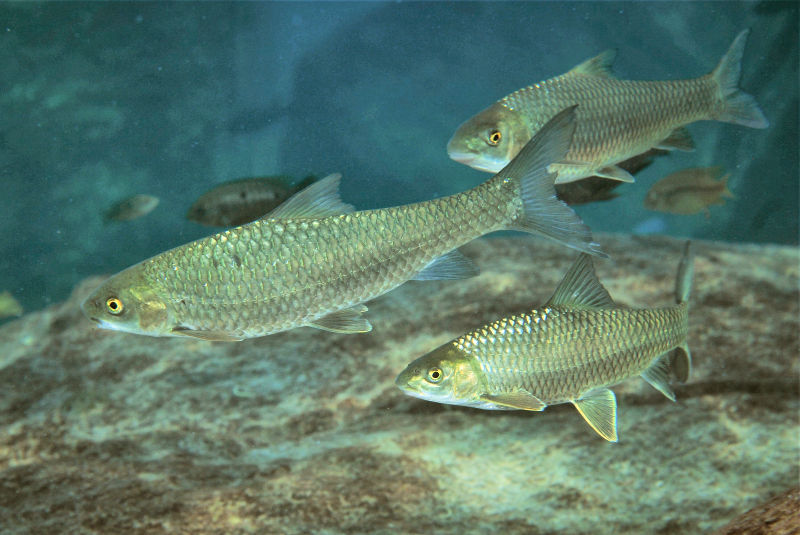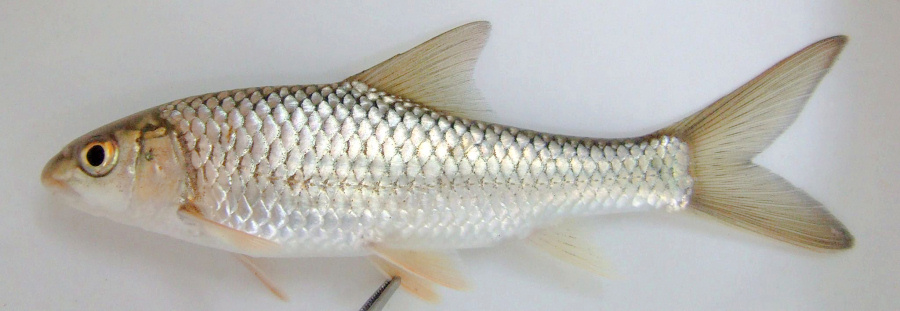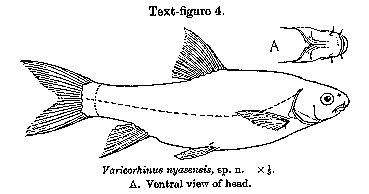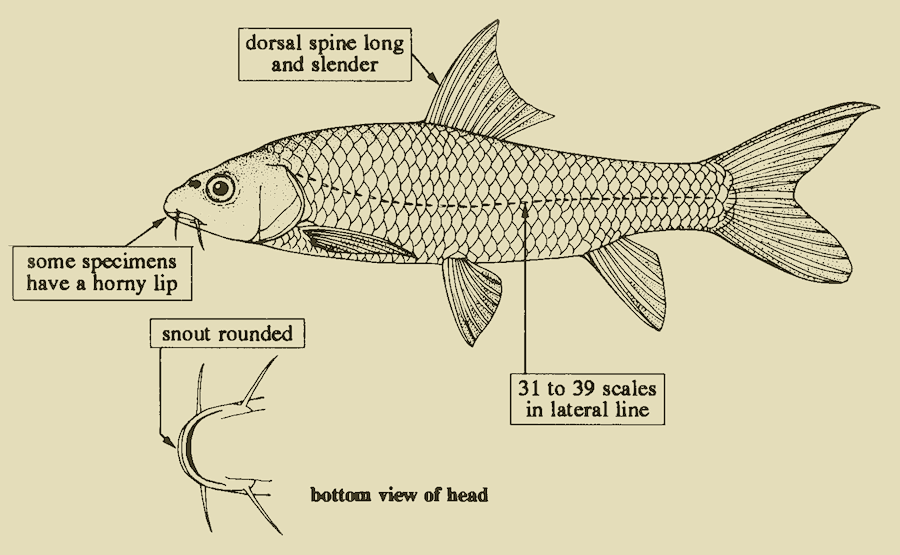Labeobarbus johnstonii (Boulenger, 1907)
by Michael K. Oliver, Ph.D.

Labeobarbus johnstonii, a large minnow found in Lake Malawi. Photo taken in 2018 at Chinyamwezi Rocks in the southeast arm of
the lake. Photo copyright © by Larry Johnson; used with his generous permission.
|

Labeobarbus johnstonii, one of three large minnow species found in Lake Malawi and surrounding rivers. Juvenile from Bua River, Malawi.
Photo copyright © by Denis Tweddle, used with his kind permission.
|

Labeobarbus johnstonii, illustration of Varicorhinus nyasensis
(a synonym of L. johnstonii) from Worthington (1933)
|
Labeobarbus johnstonii (long classified in the genus Barbus) is another of the three "large Barbus"
species of Lake Malawi (for distinguishing features, see under L. brevicauda),
and it is a particularly variable species.
Until Banister & Clarke (1980)
sorted out most of the confusion, its variants were listed by
Worthington (1933)
and Jackson (1961) under
four species or subspecies of Barbus and one of Varicorhinus;
and Seegers (1995) pointed out that
even a fifth Barbus belonged in the synonymy of this species!
The synonyms of L. johnstonii are listed here.
Some of the variation in head shape and mouth form in L. johnstonii is illustrated
in the drawing at left and in the two at the bottom of this page
(all taken from Worthington, 1933).
Endemic to Lake Malawi and its inflowing rivers, Labeobarbus johnstonii
attains at least 32 cm SL (12.5 inches) and may weigh in excess of 4.5 kg
(10 pounds). As for its diet and reproduction, it is "omnivorous but
also predatory when adult, taking small fish. Penetrates far up rivers
and spawns there" (Jackson, 1961: 549).
Indigenous names include "Nkumbwa," "Ngumbo," and "Chimwe."
Although its populations are thought to be decreasing because of overfishing, this species is classed
as of Least Concern in the IUCN Red List of threatened species.

Labeobarbus johnstonii, one of three
large cyprinid species found in Lake Malawi.
Illustration from Worthington (1933)
|

Labeobarbus johnstonii (illustration of
Barbus globiceps, a synonym of L. johnstonii);
illustration from Worthington (1933)
|

Labeobarbus johnstonii. Drawing by P. Lastrico (FAO), used by permission of the Food and Agriculture Organization of the United Nations.
NOTE: Denis Tweddle states that this "drawing is completely wrong" in that the "barbels of L. johnstonii never look like that"
(personal communication to M.K. Oliver, 26 Oct. 2015).
|


![]()



